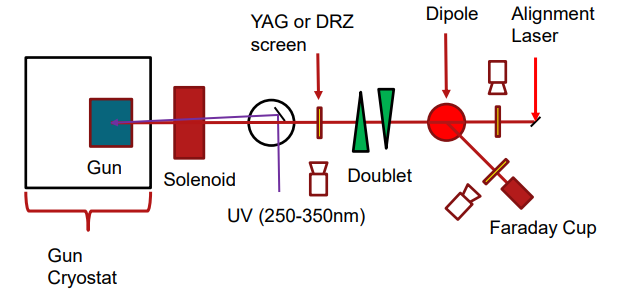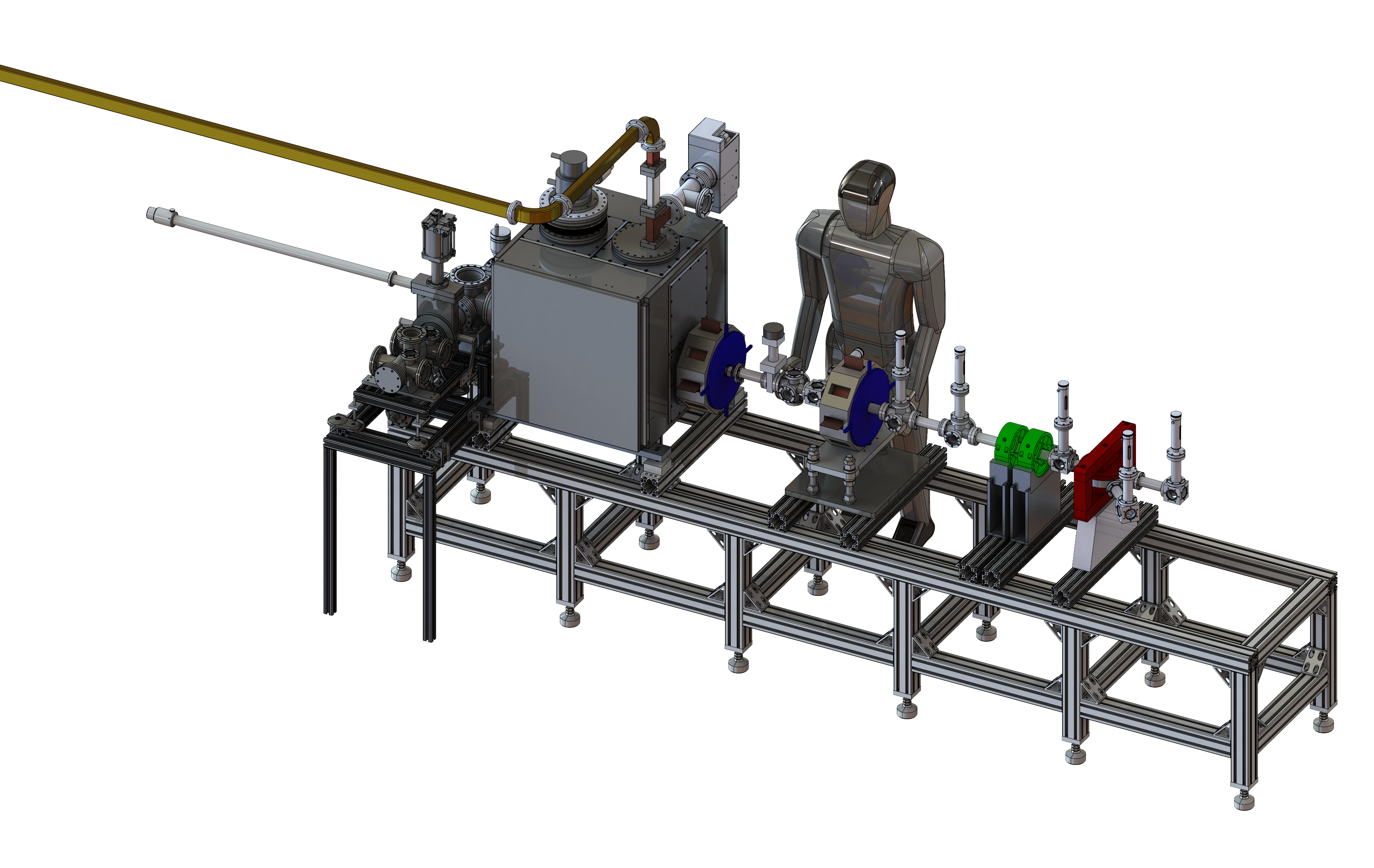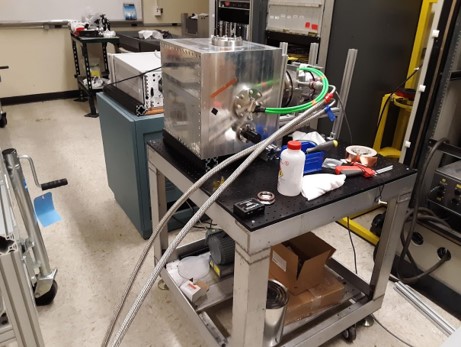Multi-Objective Testing of High Gradient Radiofrequency Accelerators (MOTHRA)
The MOTHRA laboratory space is on the site of the former UCLA cyclotron lab. The space includes a 30 in concrete bunker and associated laser clean room to perform studies relevant to the development of ultra high gradient RF accelerators and infrascture development towards an ultra compact xray free electron laser.

CYBORG Beamline
Producing higher brightness beams at the cathode is one of the main focuses for future electron beam applications. For photocathodes operating close to their emission threshold, the cathode lattice temperature begins to dominate the minimum achievable intrinsic emittance. At UCLA, we are designing a radiofrequency (RF) test bed for measuring the temperature dependence of the mean transverse energy (MTE) and quantum efficiency for a number of candidate cathode materials.


We intend to quantify the attainable brightness improvements at the cathode from cryogenic operation and establish a proof-of-principle cryogenic RF gun for future studies of a 1.6 cell cryogenic photoinjector for the UCLA ultra compact XFEL concept (UC-XFEL). The test bed will use a C-band 0.5-cell RF gun designed to operate down to 40 K, producing an on-axis accelerating field of 120 MV/m. The cryogenic system uses conduction cooling and a load-lock system is being designed for transport and storage of air-sensitive high brightness cathodes.
The CrYogenic Brightness Optimized Radiofrequency Gun (CYBORG) which produces the beam is itself a complex design utilizing advanced RF development and cryogenics technology.
C-band Infrastructure
... more coming soon
Cryogenic Component Testing

Cryogenic regimes of operation are, for various reasons, highly advantageous for normal conducting accelerator structures. Liquid cryogen-based systems are costly to implement and maintain. As a result, developing cryogenic test facilities at a smaller more cost effective scale using cryo-coolers is attractive. Before real implementations of a cryo-cooler based beamline, a significant amount of information is necessary regarding the behavior and properties of various components and materials at cryogenic temperatures. Finding this information lacking for our particular beamline case and by extension similar electron beamlines, in the near term we endeavour to generate a thorough more through library of relevant material and component properties down to the range of a liquid nitrogen temperatures (77 K) and the nominal operating temperature of a modest Gifford-McMahon cryocooler (45 K).